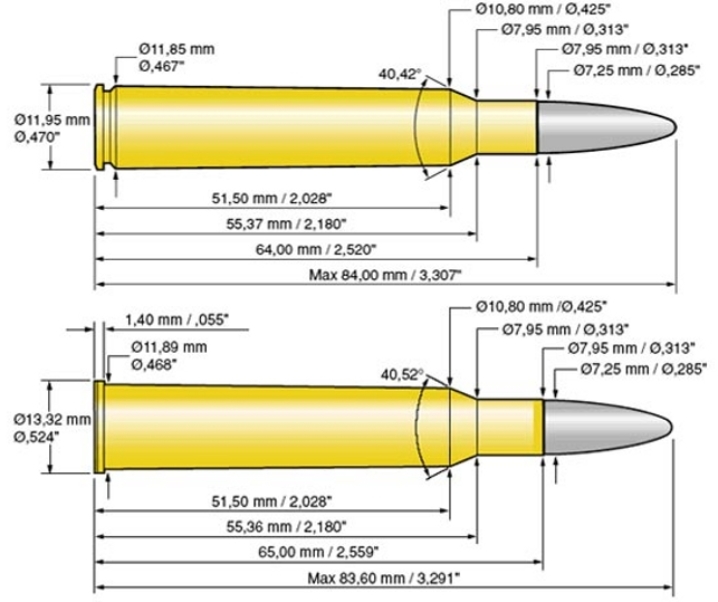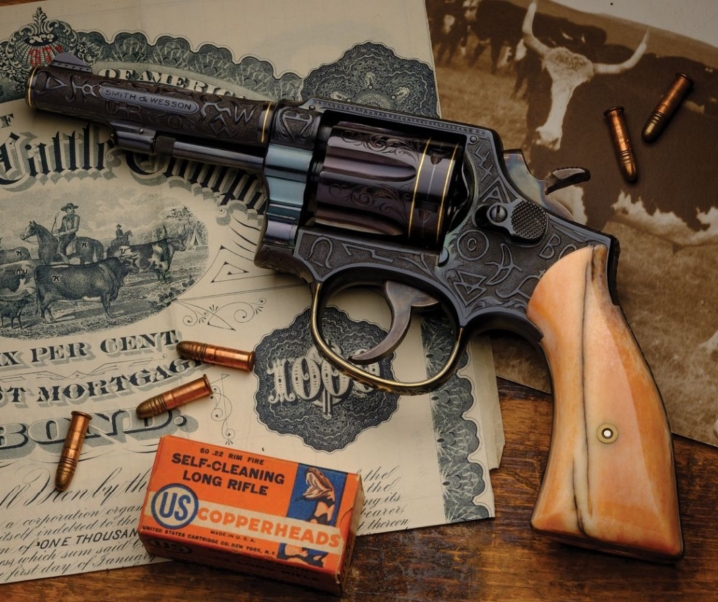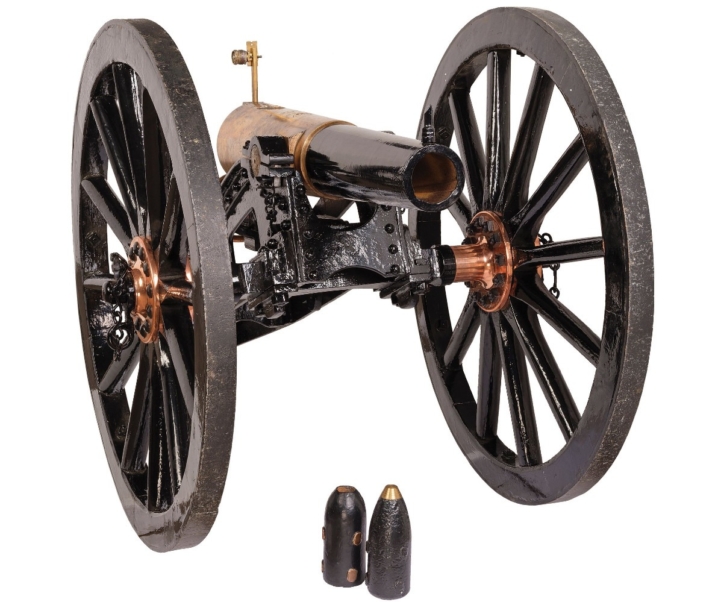The Thompson sub-machine gun is one of the most iconic arms in the world. While most were made chambered for the 45ACP pistol cartridge a small number of prototypes were made chambered for the 30 Carbine.
Fast Facts
- In 1938 the U.S. Ordnance Department determined that a lightweight carbine was needed for some operational needs. Then in 1940 they approached potential manufacturers and invited them to submit designs and prototypes.
- The new lightweight carbine was to be chambered for the new 30 Carbine cartridge.
- Auto Ordnance, makers of the Thompson sub-machine gun, decided to submit prototypes for evaluation and testing. One of these was a 1921 Thompson made chambered for the new 30 carbine cartridge.
- The specified weight for the new carbine was 5lb, but the 30 carbine chambered Thompson tipped the scales a tad over double that.
- The 30 Carbine Thompson was not to be adopted by the U.S. Military.
- One of the small number of prototype 30 Carbine 1921 Thompson guns is coming up for auction by Rock Island Auction on December 6, 2025.
The Thompson sub-machine gun was the brainchild of United States Army officer Brigadier General John T. Thompson and, interestingly the firearm he finished up creating was rather different to the original concept he envisaged.
Thompson at first intended that he would create a rifle capable of full automatic fire, made light and compact, and suitable for close quarters “trench sweeping” actions. These being actions that characterized the first stages of the First World War around 1915-1916.
Brigadier General John Thompson began work on the design of his “trench sweeper” and discovered that his original idea of making his design lightweight was not going to fill the bill for the role he envisaged for it, and the ammunition it would be required to digest. He wanted to avoid the complexity of using a gas-operated self-loading system and instead went for a simple delayed blowback operation.
This delayed blowback action used the Blish Patent – which used strategically incorporated angled surfaces of differing metals to provide the delay. But, to cut a long story short, the increased friction supposed to result from the action of the Blish Lock proved to be rather less effective in practice than expected in theory. So the action of John Thompson’s gun really functioned as a mostly blowback operated action which depended on the mass of the breechblock to deliver the desired delay.
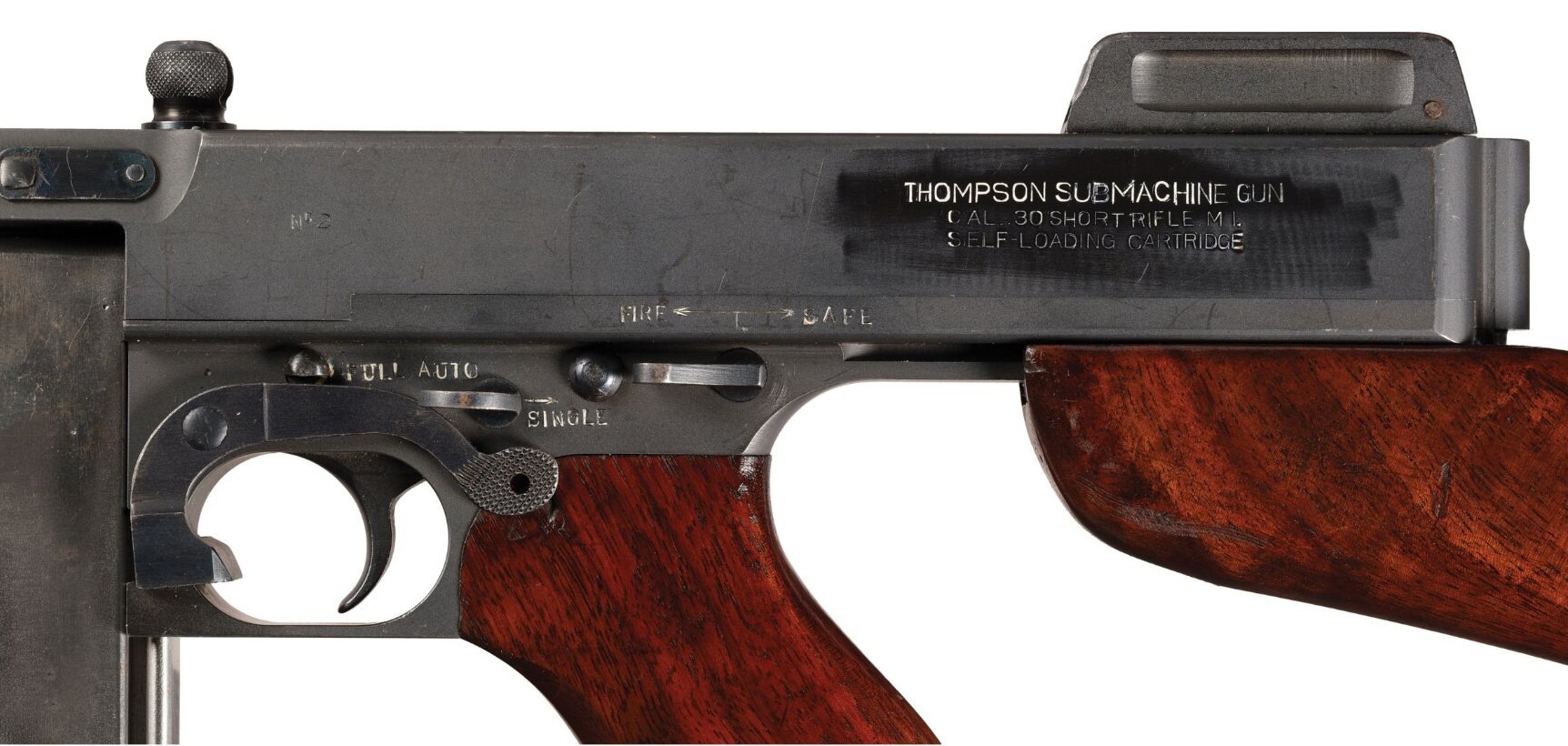
This in turn necessitated the use of pistol ammunition, and even with that the completed automatic rifle finished up rather heavy at around 10 lb: about the same as the full size and full power infantry rifles of the time.
That being said the Thompson sub-machine gun was compact and delivered up to fifty 45 ACP projectiles in the direction of one’s enemy per magazine load. The weight of the Thompson making it nicely controlable in full automatic fire – the original rate of fire being 900 rpm for the M1921 model.
The Thompson was ready for action too late for the First World War and in the inter-war period made a name for itself in the hands of law enforcement officers, gangsters and such entities as the US Postal Inspection Service.
But it would be in 1938, when the possibility that there would be another world war became a near certain probability, that the US military decided that they’d better stock up on Thompsons along with a plentiful supply of weapons and ammunition.
The Thompsons adopted were the M1928A1 which was fitted with the front pistol grip and provision for the drum and box magazines, and the simplified M1 and M1A1 which were only fitted for box magazines and used a simple blowback action.
Also in 1938 the US Military decided that there were troops who needed not to be encumbered with a long and heavy full size military rifle but instead should have lightweight and compact rifles with more range than the 45 ACP cartridge could deliver, and with less recoil.

To this end the military decided on adopting a new cartridge, Winchester had created the 30 Carbine (7.62x33mm) cartridge specifically for a new lightweight and compact semi-automatic carbine to meet the specified need of the military and this was chosen by them.
The next question was the design of the carbine that would fulfill this combat role.
In October 1940 the U.S. Ordnance Department produced specifications for this new carbine and called for manufacturers to submit designs and prototypes for evaluation.
The design concept called for a semi-automatic carbine of about 5lb weight and Major René Studler of the Ordnance Department had expressed the belief that the carbine could be created weighing around 4.5-4.75lb.
Auto Ordnance were concerned that a new lightweight semi-automatic carbine might tend to replace the “Tommy Gun” and decided to submit candidates to the Ordnance Department for evaluation and testing.
One of these was a new design which had a one-piece stock and tubular receiver, and another was a 1921 Thompson modified to use the new 30 Carbine cartridge.
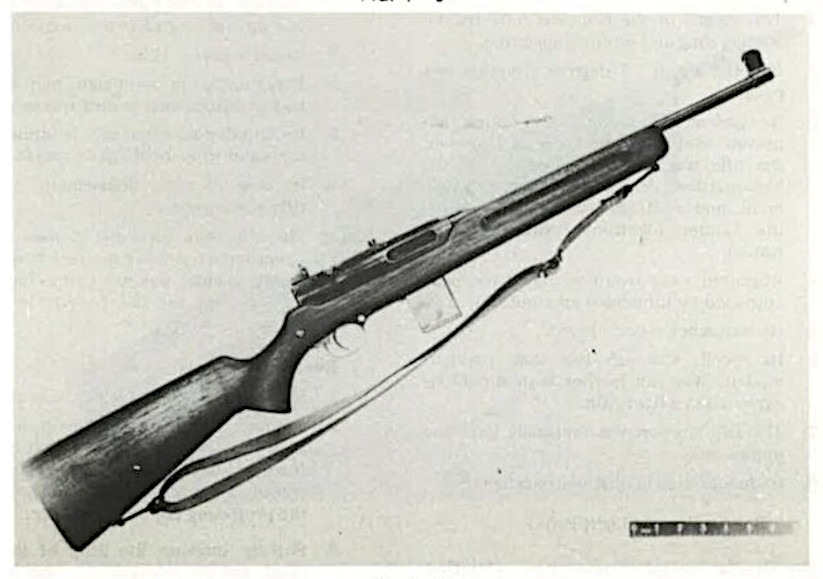
I suspect that Auto Ordnance expected their modified 1921 30 caliber Thompson to be rejected simply because it was double the weight specified by the Ordnance Department. But it was worth submitting anyway.
The Ordnance Department might have decided to order 1921 Thompsons in 30 carbine caliber to use in roles related to those planned for the new lightweight carbine: or indeed to substitute for 45 caliber Thompsons in service where that might simplify ammunition supply for certain areas of operation.
As it turned out the first Auto Ordnance 30 carbine design did not gain acceptance – the gas operated Winchester design did: and the modified 1921 Thompson was not considered to be something that the U.S. military needed to adopt: although it could have been of significance given its longer range capabilities and the ability to pack more of those slim 30 carbine cartridges into a magazine than could be done with fat 45ACP cartridges.
The number of prototypes of the 30 carbine chambered 1921 Thompson is unknown but is thought to be very low. Only a couple are known to exist, one, serial number 1, being in the Cody Firearms Museum at the Buffalo Bill Center of The West, and the one that is coming up for auction by Rock Island Auction on December 6, 2025, which bears serial number “No.2”.
Although the prototype looks identical to a 45ACP chambered Model 1921/1928 the actual dimensions have been altered to make the prototype completely suited to the 30 carbine cartridge.
The prototype “No.2” coming up for sale is described by Rock Island Auction as follows:
“Excellent, 95% original finish, with areas of gray patina, bright edge wear and handling marks. The area around the Thompson markings on the receiver shows polishing and restamping. The wood is very fine, with minor scratches and dings. The magazine does not consistently engage the catch and disconnector; otherwise, mechanically excellent. A unique example of an intriguing “could have been” in American weapons design, worthy of a place of honor in an advanced NFA, World War II or American arms collection, which may be impossible to match, let alone improve upon. NOTE: This weapon is a National Firearms Act (NFA), fully transferable Class 3, which is registered with the Bureau of Alcohol, Tobacco, Firearms and Explosives, (BATFE) that is classified as a “Curios or Relic” as defined in 27 CFR, 478.11. These weapons are still subject to the provisions of 18 U.S.C. Chapter 44 and 27 CFR part 479.”
You will find the sale page for this historic prototype Thompson if you click here.
Picture Credits: All pictures courtesy Rock Island Auction.

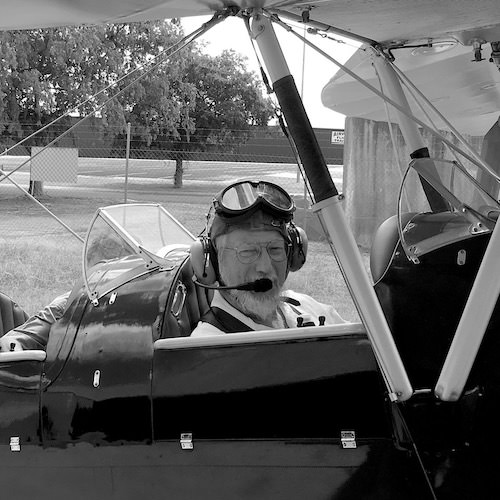
Jon Branch is the founder and senior editor of Revivaler and has written a significant number of articles for various publications including official Buying Guides for eBay, classic car articles for Hagerty, magazine articles for both the Australian Shooters Journal and the Australian Shooter, and he’s a long time contributor to Silodrome.
Jon has done radio, television, magazine and newspaper interviews on various issues, and has traveled extensively, having lived in Britain, Australia, China and Hong Kong. His travels have taken him to Indonesia, Israel, Italy, Japan and a number of other countries. He has studied the Japanese sword arts and has a long history of involvement in the shooting sports, which has included authoring submissions to government on various firearms related issues and assisting in the design and establishment of shooting ranges.





